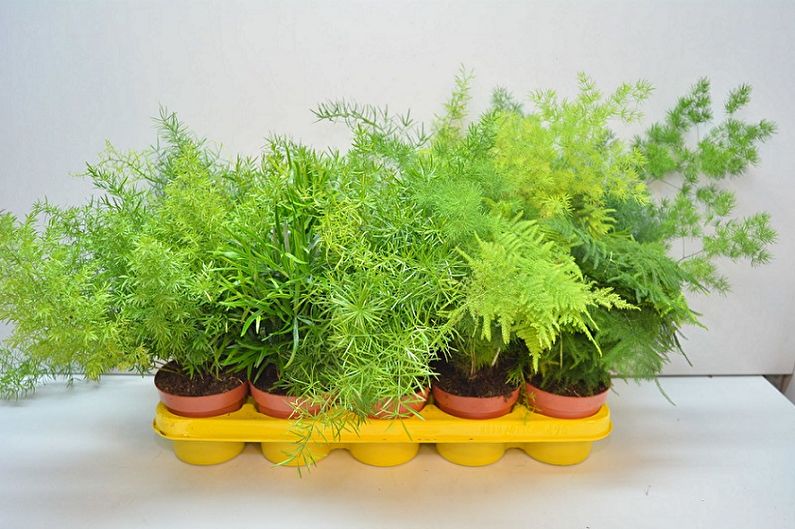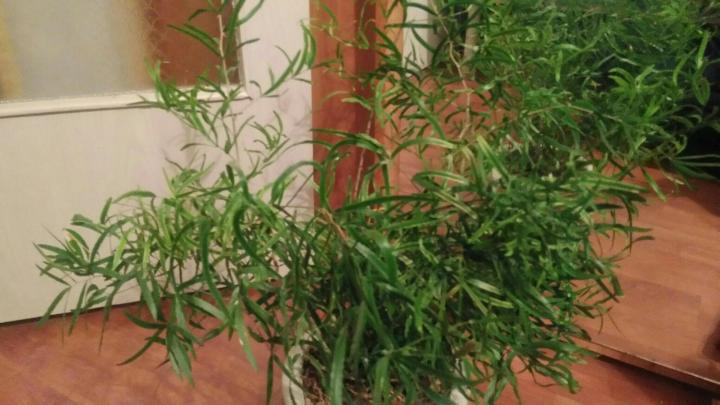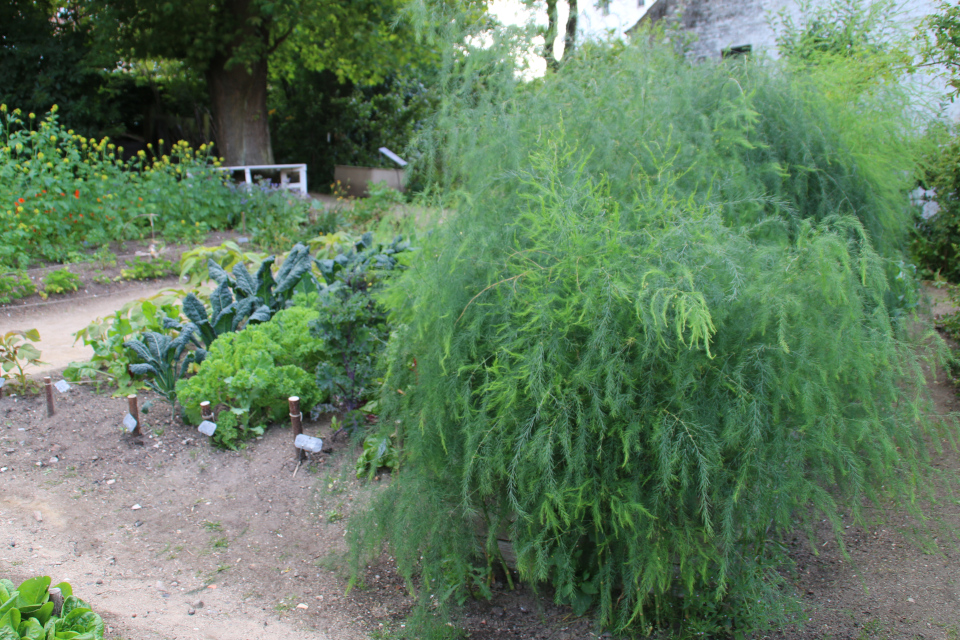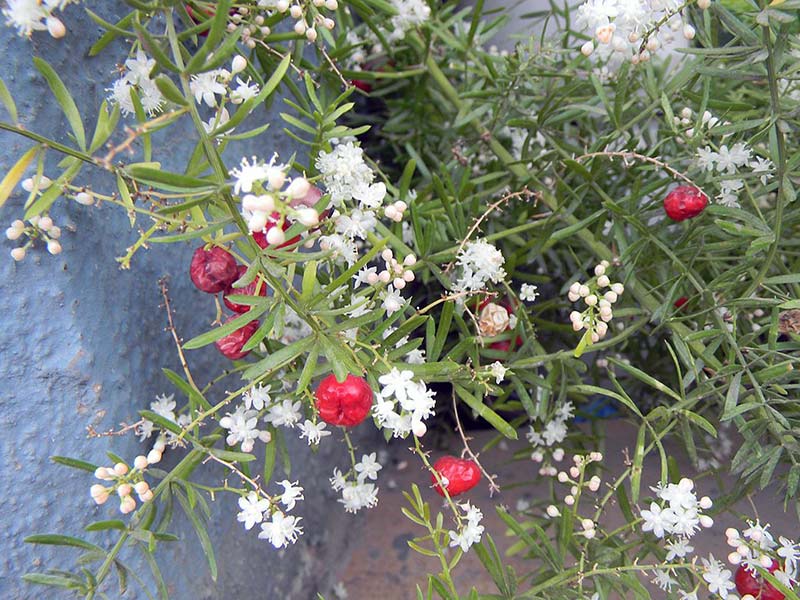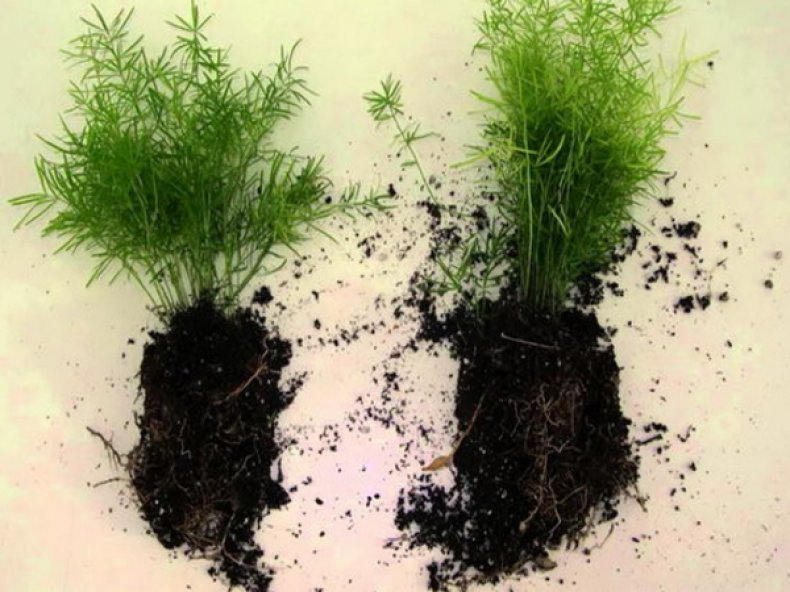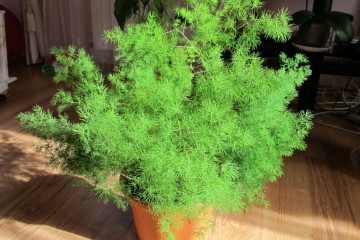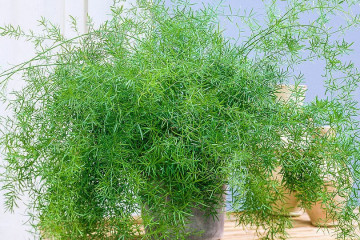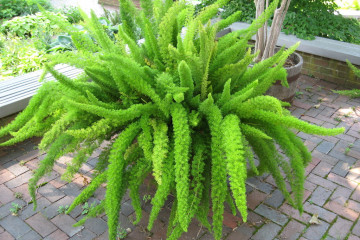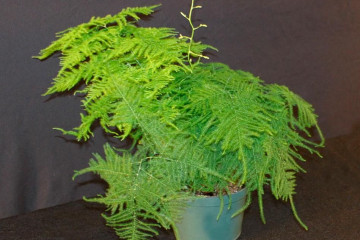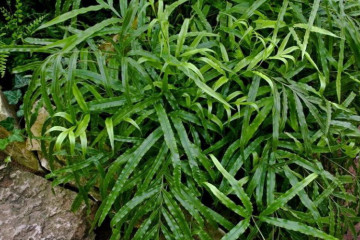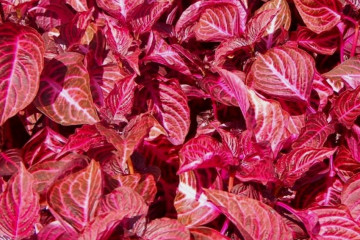Asparagus flower - home care
Content:
The natural habitat of the plant was originally the southern regions of Europe, Asia, Africa. The unpretentious flower of asparagus has spread throughout the world for several centuries. The delicate color and airiness of asparagus greenery - these are the decorative properties that it is appreciated by gardeners.
Breeding history
The medicinal properties of asparagus were already known in Ancient Egypt. In ancient Greece, wreaths were woven from the plant for the holidays. In the countries of Indochina, racemose asparagus has long been considered "a cure for 100 diseases." In Russia, culture became widespread in the 18th century.
In the Asparagus family today there are several hundred species that differ significantly from each other. Asparagus, which is loved by many gourmets, is the well-known asparagus grown on plantations in the form of vegetables. Ornamental species are not only bred in the form of houseplants, but also cut for compositions of flower bouquets. This culture adorns lawns, conservatories, courtyards and terraces.
What is asparagus
Asparagus is a perennial herbaceous crop that grows in the form of dwarf shrubs and vines. It has the following features:
- Developed root system.
- Stems are highly branched, bearing many twigs sitting in the axils of the leaves.
- The leaves are small, scaly or thorny.
- Shoots grow from rhizomes; after pruning, shoot growth stops.
- Peduncles are also small, creamy white, wallpaper or unisexual.
Healing properties
The beneficial effect of culture on the microclimate of the room lies in the ability of asparagus to neutralize heavy metals, to purify the air from harmful impurities.
A plant such as asparagus is used in the treatment and prevention of renal diseases, diabetes, swelling, inflammation and vitamin deficiency. More than three hundred of its varieties have the following properties:
- Diuretic. It contains asparagine, which removes ammonia and excess liquid.
- Vasodilator, blood-purifying. Heals blood vessels from cholesterol plaques, lowers blood pressure.
- Relieving and antispasmodic.
- Antineoplastic.
- Calming.
- Vitaminizing due to the high content of B vitamins, ascorbic acid.
- Anthelmintic.
The roots and leaves are rich in minerals and vitamins, amino acids and flavonoids.
Asparagus species
The following types are suitable for breeding in apartments:
- Asparagus pinnate (bristly) - Asparagus setaceus. This is a shade-loving species, due to its decorative qualities, it is suitable for bouquet compositions.
- Asparagus asparagus (asparagus-shaped) with creeping branches (Asparagus asparagoides).
- Sickle asparagus (Asparagus falcatus). Liana growing in natural habitat more than 10 m and up to 4 m indoors. It blooms with panicles consisting of fragrant cream-colored inflorescences.
- Dense-flowered Sprenger (Ethiopian) - Asparagus sprengeri. A creeping shrub with awl-shaped leaves, it blooms incredibly luxuriantly and beautifully. Very light-requiring.
- Meyer (Asparagus meyeri). A shrub with pubescent branches reaching 50-60 cm in length. Used more for decoration.
- Ordinary (medicinal asparagus, pharmacy). Possesses medicinal properties.
Features of caring for a houseplant
It is placed on the west or east window of the house. Optimal for culture will be indirect rays at noon, direct rays at sunrise and sunset. For southern placement, the pot is removed from direct bright light.
Summer temperature should not exceed 20-25 degrees, in winter - no more than 12-15 degrees. Since May, you can gradually accustom the flower to the open air: in the summer, take it to a loggia or garden, in a place protected from precipitation and heat.
The soil is moistened through the pallet. The water should be soft, settled, after half an hour, the excess is drained. During the growing season, the next watering is carried out after the topsoil has dried out, in the fall - after a couple of days after that, in dormant conditions, scanty watering is provided without drying out the earth.
The plant requires high humidity. To do this, organize spraying with a spray bottle on hot days in the early morning and evening. If you put moistened moss, expanded clay under the pot in a pallet, this will protect the soil from drying out.
Regular feeding is carried out once a week - in spring and summer, once every 14-15 days - in autumn, once a month - in winter. Mineral fertilizer for decorative deciduous crops should be of low concentration. Occasionally, organic feeding can be carried out in a highly diluted form with water. Fertilizers containing nitrogen and iron are also useful.
The soil mixture should have an acidity ph 5.5-7. Most flower growers believe that it should consist of turf, humus, leafy soil and sand in a ratio of 2: 2: 2: 1.
Winter care
The culture is characterized by a mild degree of winter dormancy, because it only slows down its growth. It is necessary to take care during this period by reducing watering and feeding; it is not required to completely stop care.
Asparagus bloom
At home breeding, the culture can rarely bloom. The flowering period in this case falls on July-August. Flowers are single and collected in a brush.
In biological structure, they are identical to the flowers of a lily, but very small. That is why the culture was previously referred to as liliaceae. The pastel white flowers have a delicate scent.
On one plant, flowers are of both sexes.
When the plant begins to bloom, special attention should be paid to soil fertility, the frequency of watering and top dressing, and adherence to the summer care regimen.
Transplanting and pruning a plant
All asparagus species are characterized by rapid growth rates in the early years. Before the plant turns 4-5 years old, it is necessary to transplant annually, mature - once every 2-3 years. The most optimal time for this is the first half of spring.
After abundantly wetting the soil, holding a knife along the walls of the container, you need to pull out the bush with the maximum amount of soil. Too long, decayed, damaged roots should be removed. At the same time, excess tubers are cut off.
It is necessary to pick up a container a couple of centimeters larger than the previous one, lay a drainage layer in it by a third of the height. Next, you should plant the plant, sprinkling it with a soil mixture consisting of turf, humus, leafy soil and sand. The bush needs to be well watered, after a week or two, top dressing.
How asparagus reproduces
There are four main ways to reproduce asparagus at home.
Air layering
Asparagus aerial roots, as a rule, propagate in the spring from an adult. They choose a stronger branch and make a deep cut, insert a wooden skewer (match) there and wrap this area with wet sphagnum.
You can fix the deflected shoot of the mother plant on the sandy soil of the pot located nearby. The internodes of the shoot must be covered with a substrate, they must be watered regularly.
Growing from seeds
By seeds, the culture, as a rule, propagates in February-March, after the formation of fruits. Preliminarily, a substrate of peat and sand is placed in a container, watered moderately. Seeds are sown in the ground and covered with a film (glass), placed in an illuminated place at a temperature of 20-22 degrees.
If condensation forms, the shelter should be opened slightly. Moisten the soil regularly. After about a month, the seeds germinate, when they reach a height of 7-10 cm, they can be planted. At the beginning of summer, they are transferred to a soil consisting of equal shares of humus, turf, leafy soil, peat and sand.
Cuttings
At the beginning of spring, it is necessary to prepare cuttings by cutting off the stems from a bush 8-12 cm long and planting them in a container with sand for rooting. It is necessary to cover them with a film (glass), put them in a lighted place with a temperature of 20-22 degrees. The soil should be kept moist; when condensation appears, the film is slightly opened.
The roots will appear in 30-60 days. As the bushes get stronger, they are transplanted into soil for mature plants.
Dividing the bush
Most often, this method is used when transplanting a plant in the spring. A mature bush must be divided into 2-4 divisions, if necessary, trim the roots. Planting is carried out in soil consisting of sod, leafy, humus soil and sand in a ratio of 2: 2: 2: 1.
Pests
The fall of the lower foliage indicates a pathology associated with the appearance of pests: spider mites, worms, aphids, felt insects, thrips. In relation to them, it is necessary to spray with fungicides.
In order to prevent the occurrence of these diseases, preventive treatment with a warm shower should be carried out, which will get rid of pests and wash away dust from the plant. Asparagus is an indoor flower that reacts negatively to chemicals. Many growers believe that it is better to use traditional methods, such as processing with soapy water, infusions of onion peels, and garlic.
Diseases
Gardeners should be alert when the following symptoms occur:
- Burns, yellowing, leaf fall. All this is a consequence of the active action of the sun's rays.
- Dryness of the tips, falling foliage. This is due to excessive dryness, darkness in the room. In this case, the pot should be placed in a cool place with dim lighting.
- Shedding foliage and buds, dried tips. They can occur due to lack of nutrients, timely feeding.
Before deciding what to do if the asparagus turns yellow and crumbles, then you need to first find out the reason for this. Oftentimes, the same symptoms can occur for different reasons, mentioned above.
If you cut the yellowed stems almost to the root, provide proper care, after a while the plant will start up new healthy shoots. Thus, pruning stimulates the rejuvenation of the bush.
Superstition
According to the legends that came from antiquity, asparagus is able to protect a person from melancholy and depression.
Asparagus is unpretentious, even beginner growers can take care of it. In addition, its decorative and medicinal properties conquer the hearts of more and more lovers of home floriculture.
